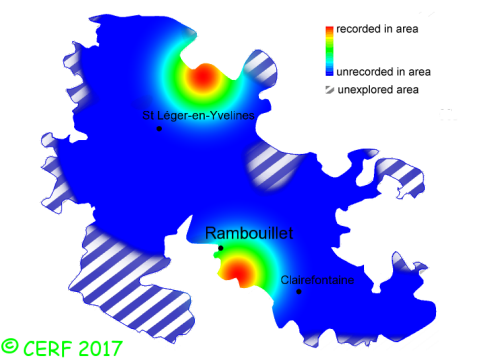common name(s) : Fruity Brittlegill
New classification: Basidiomycota/Agaricomycotina/Agaricomycetes/Incertae sedis/Russulales/Russulaceae
Former classification: Basidiomycota/Homobasidiomycetes/Agaricomycetideae/Russulales/Russulaceae
edibility : poisonous
|
|
|
The cap is violet to purple red, Bordeaux, brown; its margin is striate when mature.
The cap surface is smooth.
The stem is violet pink, carmine red, without ring.
The flesh is unchanging; its taste is acrid; the odour is of applesauce;
its texture is grainy (breaking like a chalk stick).
The gills are cream, adnate to decurrent, crowded .
The spore print is bright yellow to pale ochre. This species is mycorrhizal.
It grows on the ground, in coniferous woods, on a rather calcareous soil, with pine, spruce.
The fruiting period takes place from July to November.
| Dimensions: | width of cap approximately 7 cm (between 3 and 12 cm) |
| | height of stem approximately 7 cm (between 3 and 10 cm) |
| | thickness of stem (at largest section) approximately 15 mm (between 6 and 25 mm) |
Chemical tests : flesh becoming salmon pink when in contact with iron sulphate; positive reaction to Ga´ac (pale blue); strong purple reaction of cap cystidia to sulpho-vanillin.
Distinctive features : in the mountains; extremely rare in low grounds
Russula queletii is rare and confined in the forest of Rambouillet, and is quite rare, more generally speaking
.
|  | | Above : distribution map of Russula queletii in the forest of Rambouillet |
|
page updated on 14/01/18